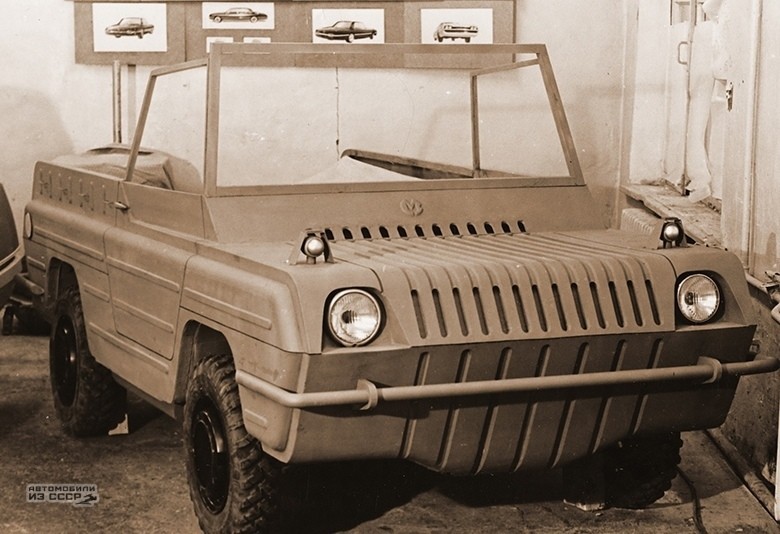Motorized stroller SMZ S-3D, or rural SUV "Shustrik", which became a "disabled person" (7 photos + 1 video)
One of the most daring crafts of the Soviet automobile industry is a motorized carriage SMZ S-3D. The exterior of the model has grown from the originally promising SUV "Shustrik". 
Tiny, unpretentious cars with a motorcycle engine, so called "disabled women", often met in our cities, in the 70s and 80s, and then went down in history. Few people know that this unsightly the car was originally conceived as a transport for the village, and even had its own name - "Shustrik".
The S-3D body was developed in the early sixties and was atypical angular for that time. Smooth lines were in fashion. But simple stamped parts were easier to repair.
For the village, the simpler the better. Body "Shustrika" designed by Eric Szabo, creator of the appearance of the ZIL-130 cab and minibus "Youth".
"Shustrik" (1964), all-terrain vehicle, the first prototype of the S-3D 
The motor was in the back. Initially, they planned to install a power unit from ZAZ-965 ... 
But later the "disabled woman" received a motorcycle motor from Izh Planet-3, 14 hp To start, an electric starter was installed, and generator for the onboard electrical network.
Gas tank above the engine, two-stroke engine. motorcycle checkpoint four speed type. For reverse movement reverse gear. 
In the cabin, everything is very simple. A minimum of appliances, sliding windows on the windows, in case of winter operation - a gasoline "stove" from "Zaporozhets".
Motorized carriage manual control. Steering rack and pinion, steering wheel spins very easily. Suspension of all wheels independent, front - torsion. 
Disabled women were produced at the Serpukhov plant from 1970 to the middle nineties. They were not on free sale, the cars were distributed social security authorities among people with disabilities who need them physical capabilities. 
After five years of operation, the stroller could be replaced with new. But in reality it was not so easy. Outdated in the nineties "disabled women" were written off, and met in the secondary market.
Thanks to a penny price, they often became the basis for various homemade buggies and similar teenage crafts, but there were also extraordinary alterations, like this one. 
One of the sidecars is even on display at the Lane Automotive Museum in the United States.





















